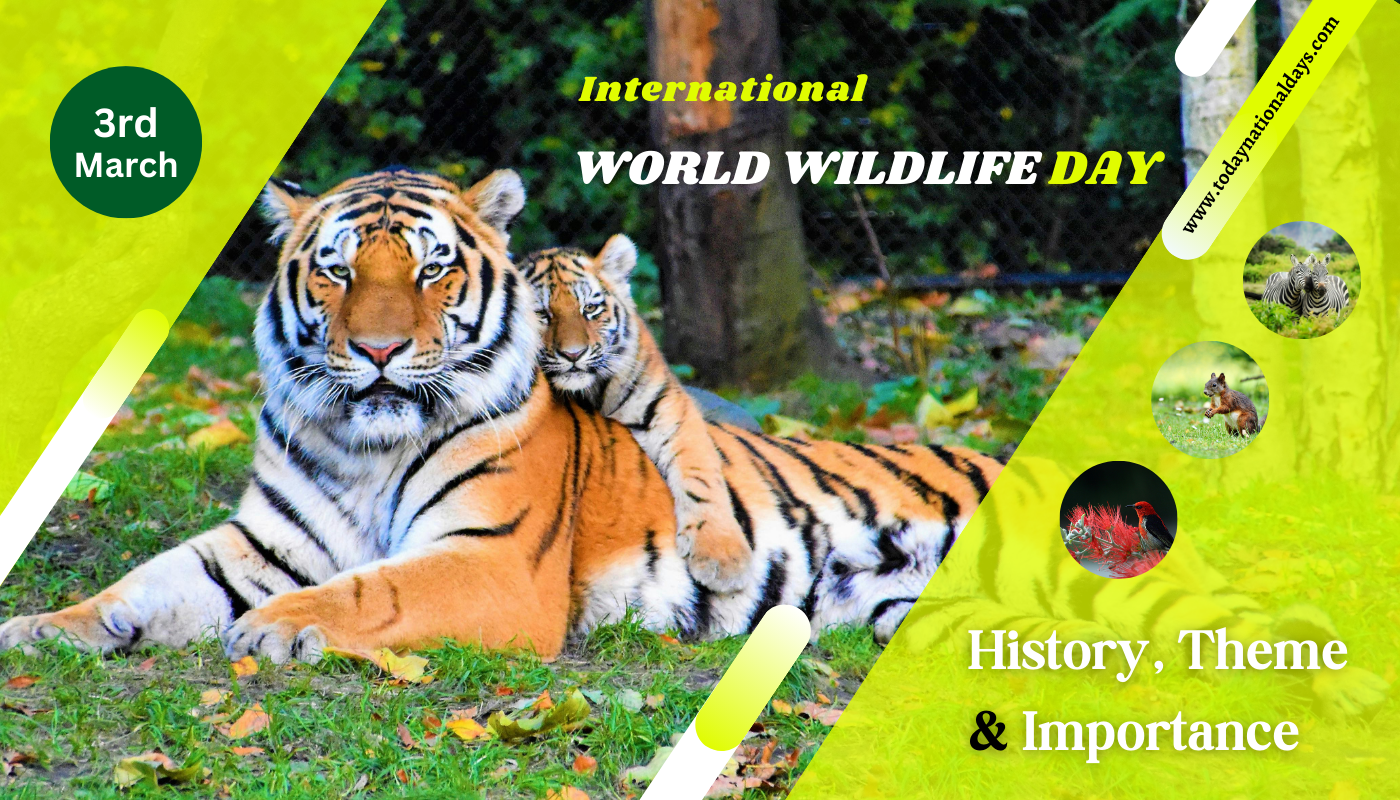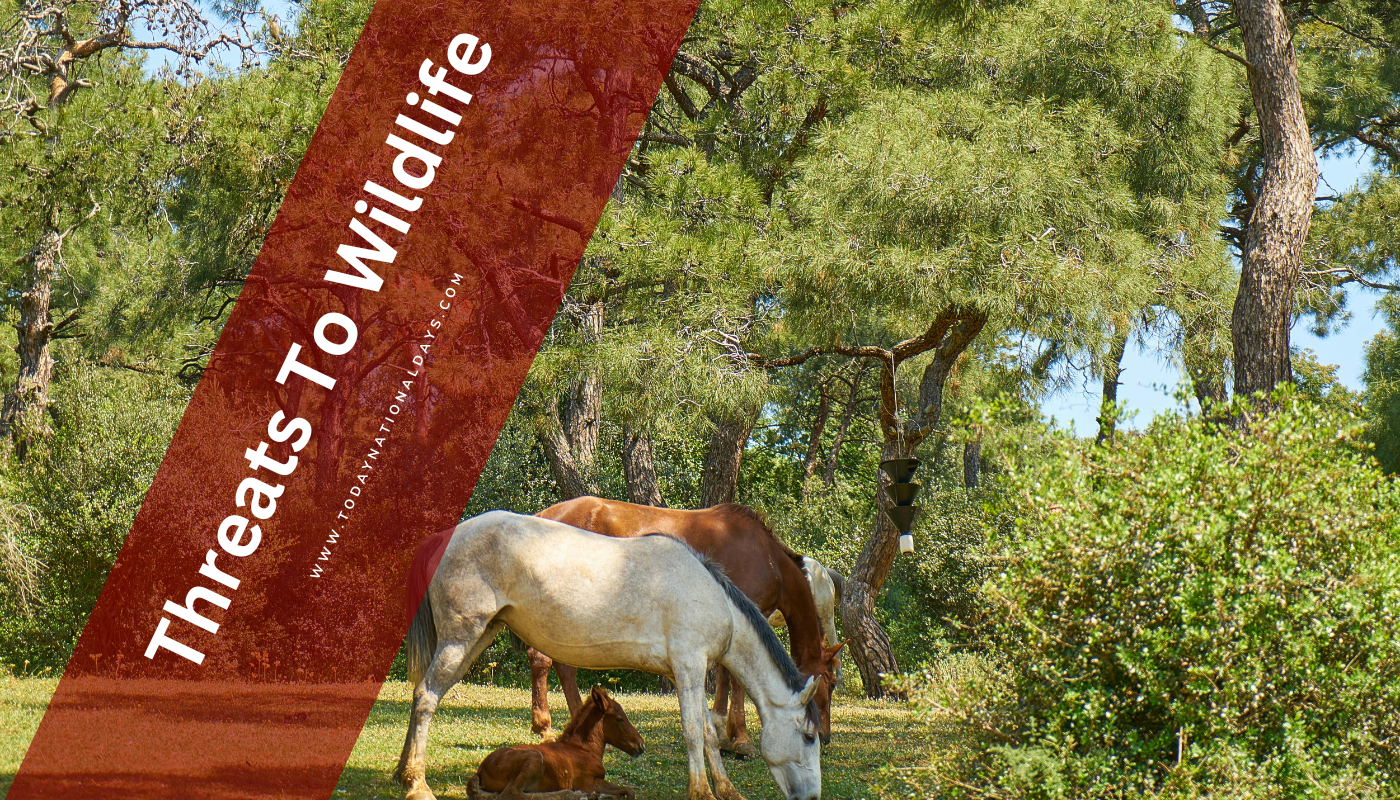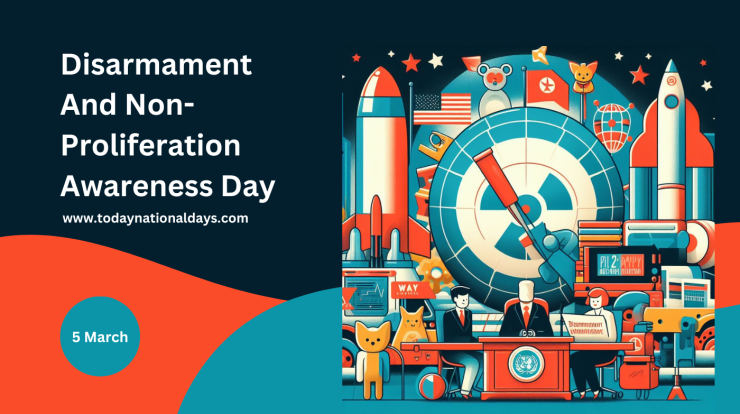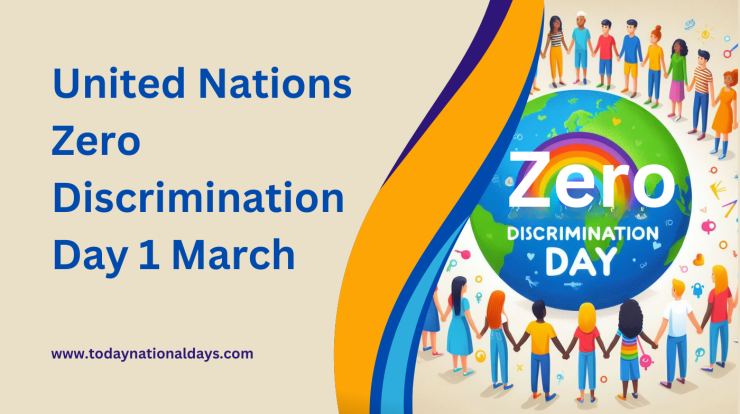
International World Wildlife Day is a time to reflect on the importance of preserving our planet’s wildlife. Dive into our blog post to discover why conservation matters.
World Wildlife Day, celebrated every March 3rd, highlights the amazing variety of plant and animal life on our planet and stresses the urgent need for wildlife conservation.
It’s a reminder of the importance of protecting nature for future generations. On this day, we reflect on how crucial wildlife conservation is for maintaining ecosystem balance and protecting the many species that share our world.
What Is International World Wildlife Day?
On December 20, 2013, the UN General Assembly declared March 3rd as World Wildlife Day to honour the signing of the CITES agreement in 1973. This day, facilitated by the CITES Secretariat, has become a global event celebrating wildlife.
Wildlife and biodiversity provide us with essentials like food, fuel, medicine, housing, and clothing. To continue enjoying these benefits, people are working together to ensure ecosystems thrive and species are preserved for future generations. Let’s celebrate wildlife and the vital conservation efforts worldwide!
How It First Started
In December 2013, 40 years after signing the Convention on International Trade in Endangered Species of Wild Fauna and Flora, the United Nations General Assembly established World Wildlife Day. They chose March 3 as the date to raise awareness about the importance of protecting the world’s wild animals and plants.
Why Is It So Important?
Earth is home to countless species of plants and animals, creating a rich diversity that sustains life. This delicate balance provides us with the air, water, food, energy, and materials we need to live. Every species plays an essential role. World Wildlife Day aims to raise awareness about the importance of protecting this biodiversity.
Why Is International World Wildlife Day Celebrated?
World Wildlife Day raises awareness about the importance of conserving wildlife and preserving biodiversity on a global scale.
It serves as a platform to highlight the threats faced by wildlife and their habitats, promote conservation efforts, and inspire action to protect our planet’s diverse ecosystems.
Additionally, it commemorates the signing of the CITES agreement on March 3, 1973, symbolizing the international commitment to regulating and safeguarding endangered species from exploitation and extinction.
What Are The Problems Facing Wildlife Today?
Sadly, many human activities like mining, farming, and construction are endangering wildlife. We’re cutting down too many trees, clearing too much land, and building so many roads that we’re destroying the natural habitats of millions of species, threatening the world’s biodiversity. Nearly a quarter of all species could become extinct in the next 50 years, and this loss also puts humans at risk.
What Are The Solutions?
We need to live more sustainably and respect nature’s diversity. It’s essential to urge our governments to protect the habitats of endangered species. Together, we can work to protect our planet and ourselves.
How Can You Contribute On World Wildlife Day?
You can get involved in local events to learn more about wildlife in your area. Consider donating time or money to organizations protecting wildlife locally or globally. Sign petitions, write to your government, and share films, photos, and articles with friends and family.
Post on social media using hashtags like #WorldWildlifeDay and #DoOneThingToday to join the global conversation. Whatever you do, you’ll be part of a worldwide effort, with millions of people celebrating and fighting for a better future for our planet.
History Of World Wildlife Day

World Wildlife Day isn’t just about one day of celebration; it’s the result of years of efforts to raise awareness and take action to protect our planet’s precious wildlife and plants. It all started with a proposal by Thailand at a CITES meeting in 2013.
The United Nations General Assembly then officially declared March 3 as World Wildlife Day in 2013. This date commemorates the signing of the CITES agreement in 1973, a significant moment in global wildlife protection.
This year celebrates the 50th anniversary of CITES with the theme “Partnerships for Wildlife Conservation.” This theme recognizes the collaborative efforts for conservation at local, national, and global levels.
It also highlights the work of organizations like UNCTAD, which has promoted legal, sustainable, and traceable wildlife trade in developing countries for over two decades through initiatives like BioTrade, Blue BioTrade, and ASYCUDA eCITES BaseSolution.
The Theme Of World Wildlife Day
Every year, World Wildlife Day highlights a particular theme to tackle important issues impacting wildlife and their environments. This year’s theme, “Connecting People and Planet: Exploring Digital Innovation in Wildlife Conservation,” tackles urgent environmental concerns and advocates for sustainable practices.
Given the current global context of biodiversity loss, habitat destruction, and climate change threatening wildlife populations, this theme holds particular importance. By highlighting it, we aim to inspire collective action and raise awareness about the significance of preserving our natural heritage.
Exploring Digital Innovation in Wildlife Conservation: Emphasizing the pivotal role of technology in protecting our valuable wildlife. Despite the formidable challenges we face—such as habitat loss, climate change, and illegal trade—this theme highlights the innovative solutions emerging from the digital revolution.
From drones surveilling protected areas to AI algorithms analyzing satellite imagery to detect poachers, and apps connecting local communities with conservation efforts, digital tools offer promising solutions to conservation challenges.
Let’s Delve Into The Essence Of This Theme
1. Connecting People
Engage in citizen science: Apps like iNaturalist enable everyone to contribute valuable data by documenting wildlife sightings.
Utilize crowd-funding platforms: Directly raise funds for conservation projects from supportive individuals.
Leverage social media: Share information, raise awareness, and mobilize communities through online campaigns.
2. Connecting Planet
Implement real-time monitoring: Sensors and camera traps gather data on animal populations and habitat health.
Utilize smart tracking devices: Monitor the movements of endangered species and deter poaching attempts.
Employ AI-powered analysis: Analyze extensive data sets to understand population trends, anticipate threats, and guide conservation strategies.
3. Exploring Digital Innovation
Embrace blockchain technology: Safely track the origin of wildlife products and combat illegal trade.
Utilize virtual reality experiences: Immerse people in nature and increase awareness of conservation needs.
Harness big data analytics: Gain deeper insights into intricate ecological relationships and predict future challenges.
International World Wildlife Day Significance
In today’s tech-driven world, using technology for conservation is vital. Digital tools bring people together globally, promoting collaboration and knowledge sharing across generations and disciplines.
Engaging younger generations through technology ensures ongoing conservation efforts. However, it’s crucial to implement technology responsibly and inclusively, considering issues like access, privacy, and ethics.
This World Wildlife Day, let’s embrace digital innovation, collaborate across sectors, and find new ways to unite people and the planet for a future where wildlife flourishes.
Threats To Wildlife

Despite the awe-inspiring beauty of wildlife, they face numerous threats to their existence. Understanding these challenges is vital in our efforts to protect them:
1. Habitat Loss And Degradation
- Urbanization and agricultural expansion lead to habitat loss and fragmentation, disrupting wildlife.
- Deforestation destroys critical ecosystems, leaving many species without homes.
- Pollution, including plastic and chemical contamination, harms wildlife and their habitats.
2. Climate Change
The planet’s rising temperatures, extreme weather events, and sea-level rise are disrupting ecosystems and the delicate balance of nature, forcing many species to adapt or face extinction.
Rising temperatures: These disrupt breeding cycles, alter food availability, and push species toward extinction.
Extreme weather events, such as droughts, floods, and wildfires, wreak havoc on habitats and force wildlife populations to relocate.
Ocean acidification: This harms marine organisms that form the base of the food chain, impacting entire ecosystems.
3. Illegal Wildlife Trade
The illegal trade of wildlife products like ivory, rhino horn, and exotic pets endangers many species and weakens global conservation efforts.
Poaching: Driven by the demand for wildlife products, poaching supports organized crime and devastates animal populations.
Trafficking: The illegal trade of live animals and plants threatens biodiversity and spreads diseases.
Unsustainable practices: Overfishing and excessive logging exploit natural resources, harming wildlife populations.
4. Pollution
Pollution from plastics, chemicals, and other contaminants harms ecosystems and endangers wildlife through ingestion, entanglement, and habitat degradation.
5. Overexploitation
Unsustainable hunting, fishing, and harvesting for commercial gain drive many species to extinction, disrupting food chains and ecosystems.
Unsustainable harvesting: Overfishing, hunting, and resource extraction exceed natural regeneration rates, endangering species.
Bycatch: Accidental capture of non-target species during fishing operations leads to unnecessary animal deaths.
Human activities frequently compete with wildlife for resources such as food and water, placing additional strain on wildlife populations.
6. Invasive Species
Introduction Of Non-Native Species
Ecological Disruption: Non-native species outcompete native species for resources and prey, disrupting the ecological balance.
Habitat Alteration: Invasive species can change habitats, making them unsuitable for native wildlife.
Disease Spread: Introduced species can transmit diseases to native populations, further threatening their survival.
Understanding these threats is crucial for taking action. Through raising awareness, backing conservation initiatives, and making conscientious decisions, we can forge a future where wildlife flourishes in harmony with humanity.
Importance Of Wildlife Conservation
Protecting wildlife is crucial for our own survival. Here’s why wildlife conservation matters:
1. Biodiversity Preservation
Maintaining Diversity: Wildlife conservation helps preserve biodiversity, ensuring the survival of various species and ecosystems that provide essential services like pollination, nutrient cycling, and climate regulation.
Nature’s Web: Wildlife forms a complex network of interconnected species, each playing a vital role in maintaining healthy ecosystems.
Genetic Diversity: Protecting diverse species keeps gene pools rich, aiding adaptability and resilience.
Ecosystem Services: Wildlife provides invaluable services such as crop pollination and water purification, essential for human well-being.
2. Ecosystem Balance
Stability and Resilience: Wildlife helps maintain ecological balance, contributing to ecosystem stability, resilience, and productivity.
Predators and Prey: Predators control prey populations, preventing overgrazing and maintaining balance.
Pollinators and Seed Dispersers: They ensure plant reproduction and diverse vegetation.
Climate Regulation: Forests and wetlands absorb carbon dioxide, helping to combat climate change.
3. Economic Benefits
Tourism and Services: Wildlife tourism and ecosystem services significantly support local economies.
Sustainable Tourism: Wildlife attracts tourists, generating income and supporting conservation.
Sustainable Resource Management: Responsible use of resources like fish and timber offers long-term economic benefits.
Bioprospecting: Studying wildlife leads to breakthroughs in medicine and agriculture, driving economic growth.
4. Cultural and Aesthetic Value
Cultural Significance: Wildlife plays a prominent role in mythology, folklore, and traditions.
Artistic Inspiration: Wildlife has inspired artists throughout history.
Intrinsic Value: Beyond economic benefits, wildlife holds intrinsic value and deserves protection.
Harming wildlife ultimately harms us. By protecting wildlife, we ensure a healthy planet for future generations, where humans and nature can thrive together.
Success Stories in Wildlife Conservation
Despite the many challenges facing wildlife, there are inspiring success stories where conservation efforts have made a real difference. Here are some remarkable examples:
1. The Remarkable Recovery of the Amur Tiger
Once on the brink of extinction, the Amur tiger population has rebounded thanks to anti-poaching patrols, habitat protection, and reintroduction programs.
2. The Black Rhino’s Charge Against Poaching
Black rhino populations, devastated by illegal poaching, have increased due to stringent anti-poaching measures, ranger training, community engagement, and innovative tracking technologies.
3. The California Condor’s Wings Take Flight
Habitat loss and DDT poisoning nearly wiped out California condors. A successful captive breeding and reintroduction program has brought these birds back from the brink.
4. Increase in the Mountain Gorilla Population
Threatened by habitat loss and poaching, mountain gorilla numbers have started to recover thanks to ecotourism initiatives, anti-poaching patrols, and community-based conservation projects.
5. The Sea Turtle’s Journey Back to the Shore
Sea turtle populations, impacted by habitat destruction and bycatch, are showing signs of recovery due to marine-protected areas, stricter fishing regulations, and nest relocation programs.
These success stories highlight the power of collective action, political will, and community engagement in achieving conservation goals.
They inspire us to continue our efforts and celebrate the resilience of wildlife and the dedication of those who work to protect them.
Ways to Get Involved
Supporting wildlife conservation is crucial, and there are many ways you can help:
1. Supporting Conservation Organizations
Donate: Financially support reputable organizations working to protect wildlife. Research them first to ensure their values align with yours.
Volunteer: Offer your time and skills to conservation projects like habitat restoration or educational outreach. Look for local opportunities or organizations working on issues you care about.
Raise Awareness: Share information about wildlife threats and conservation efforts on social media, with friends and family, or by organizing local events.
2. Spreading Awareness
Advocate: Voice concerns about policies and laws impacting wildlife. Share your thoughts with elected officials.
Educate Yourself: Learn more about wildlife threats and conservation efforts through online courses, books, articles, or workshops at local zoos or nature centers.
Practice Responsible Consumerism: Opt for eco-friendly products, endorse sustainable businesses, and steer clear of goods associated with wildlife exploitation.
3. Sustainable Lifestyle Choices
Reduce Your Carbon Footprint: Conserve energy at home, use public transportation, walk or bike when possible, and support renewable energy sources.
Minimize Waste: Recycle, compost, avoid single-use plastics, and choose products with minimal packaging.
Mindful Consumption: Eat less meat, support sustainable agriculture, and avoid products from unsustainable practices like deforestation.
4. Connect with Nature
Explore the Outdoors: Spend time in nature, visit parks and protected areas, and appreciate the natural world.
Support Citizen Science Projects: Participate in projects like birdwatching surveys or monitoring butterfly populations.
Get Involved Locally: Join or start a community group dedicated to protecting local wildlife habitats and educating others.
Conclusion Of International World Wildlife Day
On World Wildlife Day, let’s reflect on the importance of wildlife conservation. Ketto’s crowdfunding platform allows us to support projects aimed at preserving habitats and protecting endangered species. Together, we can create a future where wildlife thrives alongside humanity. Every action counts!
FAQs Of International World Wildlife Day
What Is The Meaning Of World Wildlife Day?
World Wildlife Day offers a chance to honor the diverse and stunning array of wild plants and animals. It also serves as a platform to highlight the numerous benefits that conservation efforts bring to humanity.
What Is The Slogan For International World Wildlife Day?
Choose to be the difference, not the cause of deforestation. Come together and protect wildlife. A world devoid of wildlife is a world devoid of its beauty. Let’s safeguard our most valuable treasure: Wildlife.
What Is A Short Quote For Wildlife?
“Wildlife is something which man cannot construct. Once it is gone, it is gone forever.” -Joy Adamson.
What Is A Danger To Wildlife?
Wildlife encounters substantial threats, including illegal wildlife trade, habitat destruction, invasive species, pollution, and climate change. Illegal Wildlife Trade ranks as the fourth largest criminal industry globally, following drugs, arms, and human trafficking.






